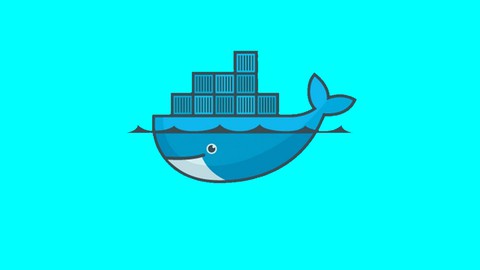
Getting Started with Docker For Developers
Getting Started with Docker For Developers, available at $19.99, has an average rating of 4.5, with 22 lectures, based on 2 reviews, and has 656 subscribers.
You will learn about Setting up Docker Base application setup How to create Docker image and explore base commands Learn how deploy a Docker app Learn back-end and front-end workflows How to finalize and test your setup for both back-end and front-end How to manage multiple services with compose Overview of Swarms and Kubernetes This course is ideal for individuals who are Developers It is particularly useful for Developers.
Enroll now: Getting Started with Docker For Developers
Summary
Title: Getting Started with Docker For Developers
Price: $19.99
Average Rating: 4.5
Number of Lectures: 22
Number of Published Lectures: 22
Number of Curriculum Items: 22
Number of Published Curriculum Objects: 22
Original Price: $19.99
Quality Status: approved
Status: Live
What You Will Learn
- Setting up Docker
- Base application setup
- How to create Docker image and explore base commands
- Learn how deploy a Docker app
- Learn back-end and front-end workflows
- How to finalize and test your setup for both back-end and front-end
- How to manage multiple services with compose
- Overview of Swarms and Kubernetes
Who Should Attend
- Developers
Target Audiences
- Developers
Docker is an open source containerization platform. It enables developers to package applications into containers—standardized executable components combining application source code with the operating system (OS) libraries and dependencies required to run that code in any environment.
In this course, we’ll explore several use cases where and how developers leverage the power of Docker and its tools to maximize your time spent coding versus setting up DevOps. Learn how deploy a Docker app. Learn about base application setup, as well as instructions to create your first Docker image and explore base commands
We’ll start this course off with an initial setup and an overview of Dockers basics that you need as a developer. Then We’ll get into back-end and front-end workflows, and how to finalize and test your setup for both back-end and front-end. We’ll then put it all together in a full stack setup.
Next we’ll implement a continuous integration approach to Docker and development. And finally, we’ll review how to manage multiple services with compose and also provide a brief overview of Swarms and Kubernetes.
This course will help you understand Docker containers from scratch while taking you through best practices. Starting with an introduction to Docker, you’ll learn how to use containers and VirtualBox for development.
Get up to speed with creating containers and understand how they work Package and deploy your containers to a variety of platforms.
.
Course Curriculum
Chapter 1: Introduction
Lecture 1: Introduction
Chapter 2: Getting Started
Lecture 1: Docker Overview
Lecture 2: Base application setup
Lecture 3: Create Docker image
Lecture 4: Base commands exploration
Lecture 5: Back-end and front-end architecture
Lecture 6: Practical back end with Compose
Lecture 7: Finalize and test the back-end setup
Lecture 8: Front-end setup
Lecture 9: Full stack setup
Lecture 10: Other language tips
Chapter 3: Swarm
Lecture 1: Swarm overview
Lecture 2: Adding nodes to the swarm
Lecture 3: Deploy and inspect a service to the swarm
Chapter 4: Kubernetes
Lecture 1: Kubernetes Overview
Lecture 2: Create cluster
Lecture 3: Deploy your first app to the cluster
Chapter 5: CI and Deployment
Lecture 1: The CI and deployment use case for devs
Lecture 2: Continuous integration: Travis file
Lecture 3: Integration into GitHub
Lecture 4: Application life cycle with CI and Docker
Chapter 6: Conclusion
Lecture 1: Conclusion
Instructors
-
Manny H.
Developer
Rating Distribution
- 1 stars: 0 votes
- 2 stars: 0 votes
- 3 stars: 0 votes
- 4 stars: 1 votes
- 5 stars: 1 votes
Frequently Asked Questions
How long do I have access to the course materials?
You can view and review the lecture materials indefinitely, like an on-demand channel.
Can I take my courses with me wherever I go?
Definitely! If you have an internet connection, courses on Udemy are available on any device at any time. If you don’t have an internet connection, some instructors also let their students download course lectures. That’s up to the instructor though, so make sure you get on their good side!
You may also like
- Top 10 Language Learning Courses to Learn in November 2024
- Top 10 Video Editing Courses to Learn in November 2024
- Top 10 Music Production Courses to Learn in November 2024
- Top 10 Animation Courses to Learn in November 2024
- Top 10 Digital Illustration Courses to Learn in November 2024
- Top 10 Renewable Energy Courses to Learn in November 2024
- Top 10 Sustainable Living Courses to Learn in November 2024
- Top 10 Ethical AI Courses to Learn in November 2024
- Top 10 Cybersecurity Fundamentals Courses to Learn in November 2024
- Top 10 Smart Home Technology Courses to Learn in November 2024
- Top 10 Holistic Health Courses to Learn in November 2024
- Top 10 Nutrition And Diet Planning Courses to Learn in November 2024
- Top 10 Yoga Instruction Courses to Learn in November 2024
- Top 10 Stress Management Courses to Learn in November 2024
- Top 10 Mindfulness Meditation Courses to Learn in November 2024
- Top 10 Life Coaching Courses to Learn in November 2024
- Top 10 Career Development Courses to Learn in November 2024
- Top 10 Relationship Building Courses to Learn in November 2024
- Top 10 Parenting Skills Courses to Learn in November 2024
- Top 10 Home Improvement Courses to Learn in November 2024






















